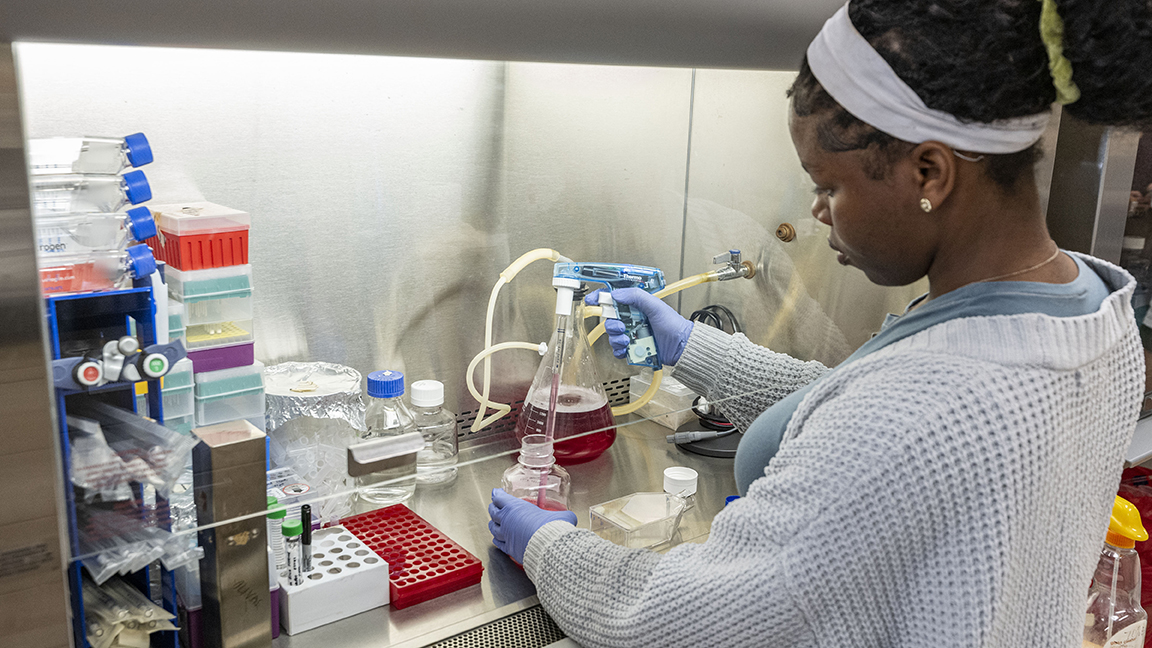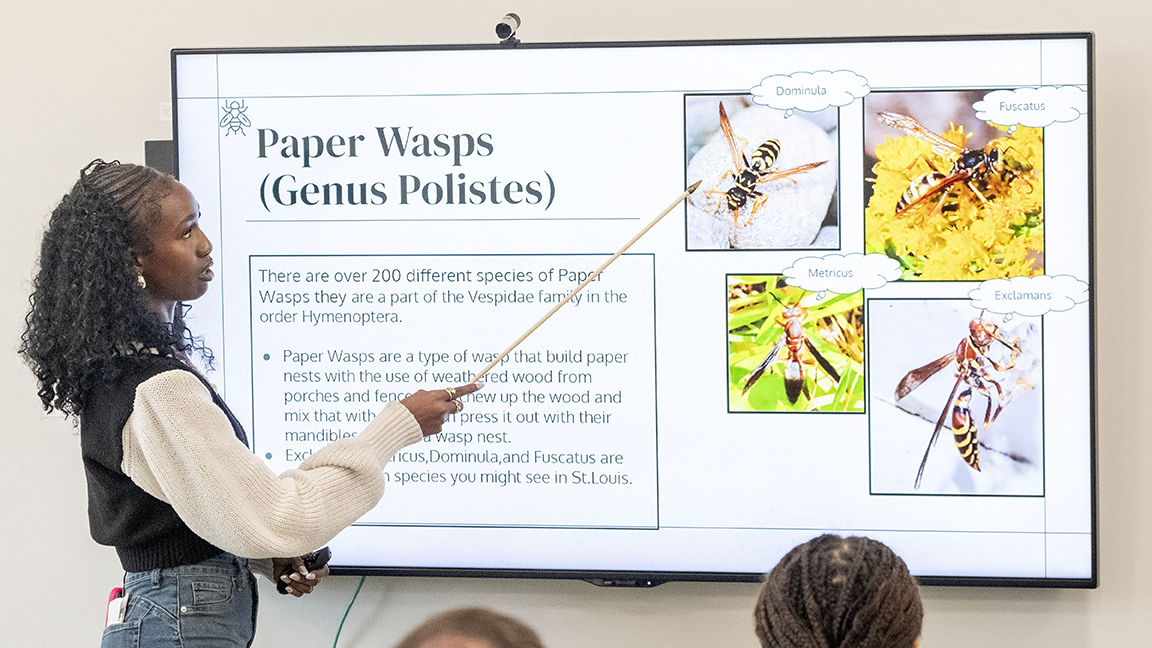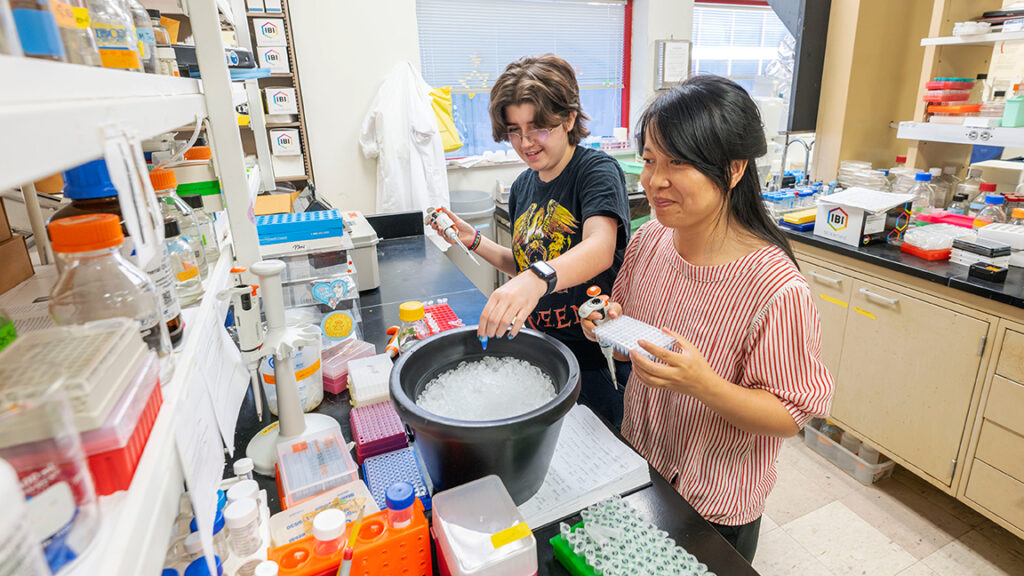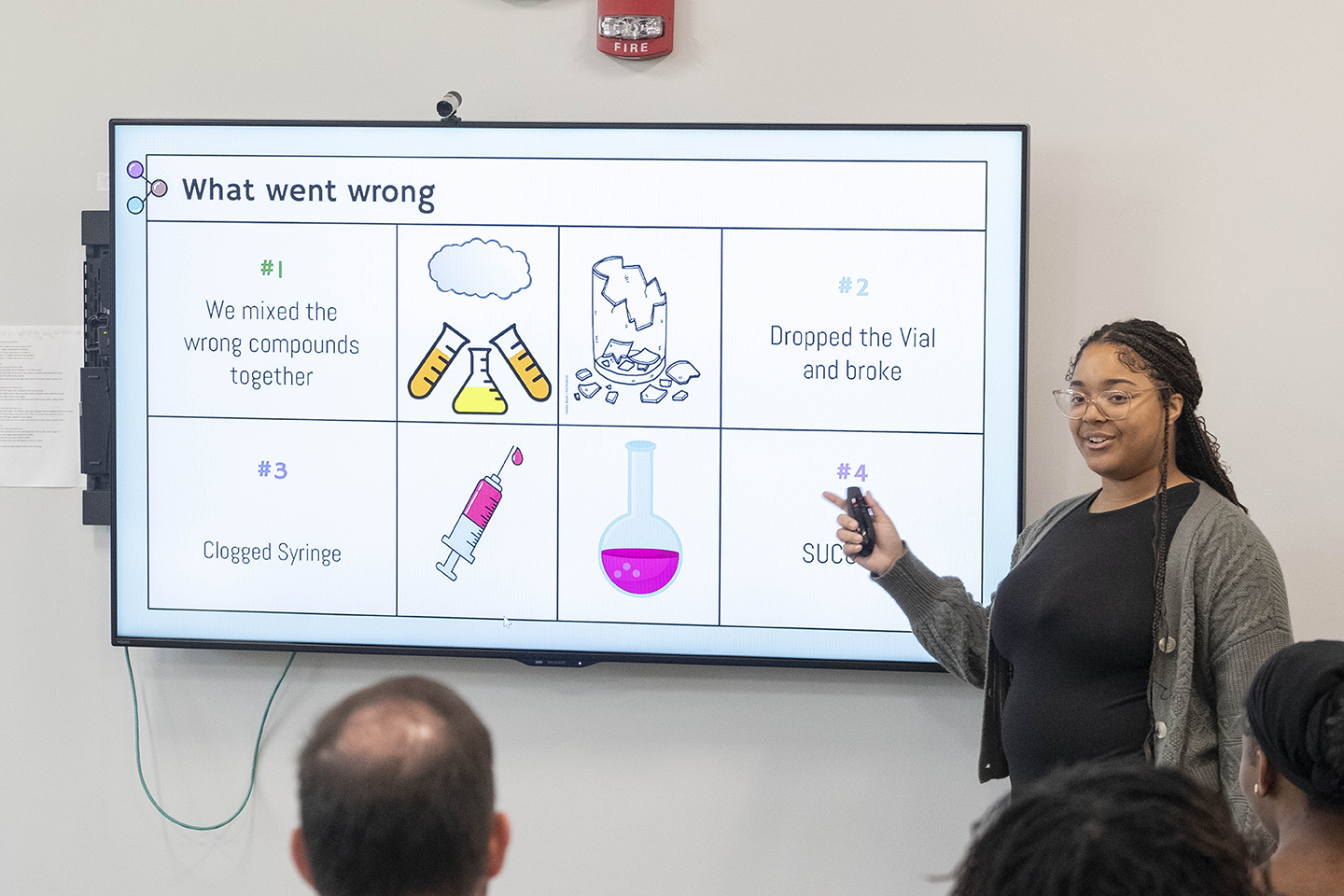CLIMB: UMSL’s Collaborative Blueprint for the Next Generation of Science

After spending the summer watering tarantulas, studying genes, or drugging bees, six local teens emerged with a new perspective on how science could shape their future career paths. The teens were part of CLIMB, a paid internship program from the University of Missouri–St. Louis (UMSL) that brings students from neighboring high schools into scientific research spaces.
The James S. McDonnell Foundation was proud to support this year’s CLIMB cohort. Since UMSL launched the program 11 years ago, more than 100 high school students and recent graduates have completed CLIMB, which stands for Collaborative Laboratory Internships and Mentoring Blueprint. What started as a partnership with Jennings School District has since expanded to students in Hazelwood, Ritenour, Riverview Gardens, and University City schools.
The program has three main components: research lab experience, professional development and college preparation, and local field trips that showcase the breadth of science careers. Each year, CLIMB culminates with a presentation where the interns reflect on what they’ve learned over the course of the six-week program.
While taking part in active research labs in UMSL’s biology and chemistry departments, this year’s students studied topics ranging from how bees behave after being dosed with ethanol to how rice plants respond to nitrogen deficiency. One intern examined the protein concentration of lysates as it relates to Alzheimer’s disease while another conducted field work to determine if the growth rate of paper wasp nests was impacted by the May tornado.
Dr. Bethany Zolman, who chairs UMSL’s Biology Department, said, “Our primary interest is exposing them to the science, but we also want them to see what college can do for them and how these two things connect.”
The interns took time each week for self-reflection, goal setting, and building skills related to college readiness. By spending time on campus and hearing from academic advisors, college students, and faculty, CLIMB participants also learn more about what the college experience is like. The hope is that this aspect of CLIMB will spark an interest in higher education or reinforce an existing desire to attend college.
“It’s reducing some of the barriers about college and making it so that it’s a little bit easier for them to see themselves in this space,” Zolman said. “But then it is mostly a STEM program, and so that is also this idea of exposing them to a broader idea of what science is and what potential scientific careers are than they could see in their high school classes.”
Field trips to local institutions like Bayer Crop Science, the Donald Danforth Plant Science Center, Missouri Botanical Garden, Saint Louis Zoo, and Shaw Nature Reserve are a key part of that exposure. One intern, Joolade Bada, noted during her final presentation that it was especially impactful to visit the Danforth Center and learn that plant science experts come from all over the world to work in St. Louis.
“We’re helping promote that there is a broad definition of what careers in STEM look like to try and inspire them into whatever direction they’re going to go,” Zolman said.
Several of the interns told the audience at last month’s closing event said they’d gained confidence and improved personal accountability during the program. Where they might have had to share a pipette with three other students in their high school science classes, they were responsible for maintaining their own lab equipment at UMSL. Everyday lab moments, from washing dishes to caring for baby tarantulas, contributed to the participants feeling more comfortable in scientific settings.
CLIMB also provided a cushion for the students to make mistakes and learn from them. Recent high school graduate Vajah Bassett shared that the first time she tried to run a particular experiment in the Bauer Lab, the wrong compounds were mixed together. On the next attempt, she dropped the vial. A clogged syringe disrupted the experiment on the third try. But Bassett finally found success on her fourth attempt.
“When we talk about scientific research, we talk about resiliency as one of the key things that makes a good scientist,” Zolman said. “You have to be willing to have something not work and to try it again or try troubleshooting it in order to be able to move through a problem. Realizing that mistakes aren’t the end of the experiment is an important part of that.”
Half of this year’s cohort had recently graduated from high school and will be attending college in the fall, taking with them the lessons they learned from CLIMB. All three have declared scientific majors, and those who are returning to high school have also expressed an interest in STEM paths.
“The students who are engaged in this are so curious and so excitable and so engaged in what they’re doing,” Zolman said. “It makes it really fun to think about the next generation of science.”



